Laying carpet and carpet tiles over beautiful hardwood floors was a popular trend in the 1970s and 80s. To enjoy the natural hardwood flooring buried within your home, consider removing the carpet tiles to reveal a gorgeous warm wood floor underneath.
Exposing the hardwood floors underneath your carpet tiles may seem like a daunting task, but it doesn't have to be. We have searched multiple sources to bring you a practical and concise process to remove carpet tiles from your wood floor.
Although it will involve some work, exposing your wood floors from underneath your carpet tiles can be very rewarding. A few steps will ensure your flooring project will go off without a hitch. The steps to removing carpet tiles from your wood floor are as follows:
- Gather materials
- Pull back the baseboards
- Carpet tile removal
- Dispose of old carpet tiles
- Remove adhesive from wood floors
The process of removing carpet tiles from your wood floors is an important part but just the beginning of your flooring project. You may find yourself wondering what products effectively and easily remove carpet tiles. You may question the cost, what tools make the work easier, or how to replace your carpet tiles. We will answer all of these questions and discuss other closely related topics; keep reading!
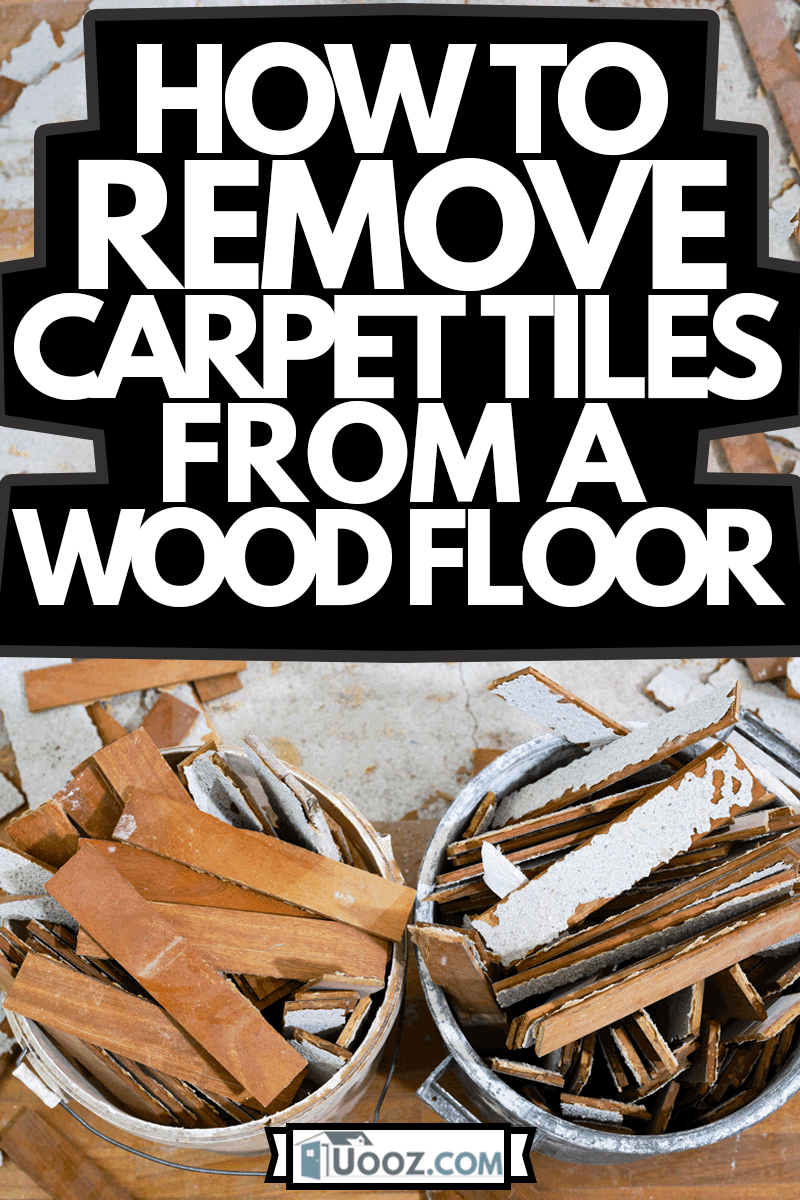
1. Gathering materials
The materials that you will need to protect yourself and make this project a success are as follows:
- Face mask
- Goggles
- Gloves
- Knee pads
- Flat bar
- Hammer
- Putty knife or floor scraper
- dry ice or ice and water
- heat gun or blow dryer
- sandpaper
- adhesive remover
- Garbage bags
- Tape
- Wheelbarrow
- Vacuum
You want to don protective gear such as a mask, goggles, gloves, and knee pads to prevent accidental ingestion or inhalation of years worth of dust and debris and to prevent injury to your knees. A flat bar, hammer, and putty knife or floor scraper will come in handy to lift carpet tiles, while a bit of sandpaper can be helpful to scrape up stubborn bits of adhesive.
Dry ice/ice water, heat gun/blow dryer, and adhesive remover are some options to help with removing old adhesive when scraping's not enough. Garbage bags, tape, vacuum, and a wheelbarrow will make disposal of the old carpet tiles more efficient.
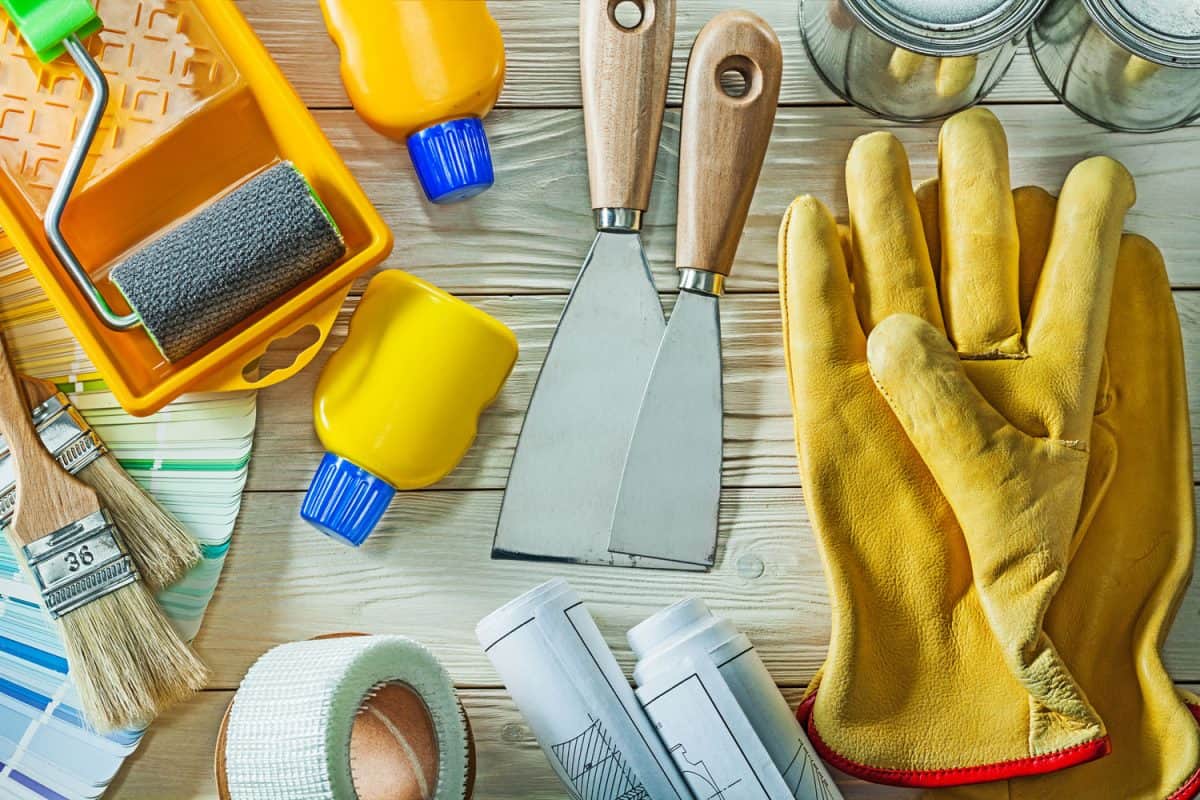
Using Personal Protective Equipment
If the carpet tiles you are removing are from before 1980, adhesives may contain dangerous chemicals like asbestos, and a mask should be worn to prevent inhalation. Removing carpet tiles may involve old dust or toxic debris such as old hardened adhesive, so goggles should be worn to protect your eyes.
Gloves will protect your hands while also making pulling tiles up easier. Knee pads will make working on your knees for extended periods easier and protect your joints from long-term damage.
2. Pulling back the baseboards
Carpeted floors, including those with carpet tiles, are typically finished using baseboards, but these should be removed before removing the actual tiles. Begin by examining the tops of the baseboards for sealant or caulk that can be removed by cutting through it with a utility knife.
Your pry bar, putty knife, or even a flat screwdriver can then be used to pry the baseboards away from the wall. Leftover nails can be pulled out with pliers.
3. Carpet tile removal
Carpet tiles are often glued to the floor using strong adhesives. You can use your flat bar, such as the one pictured below, or a putty knife to pry the edge of your carpet tiles up from the flooring.
A hammer may be needed to hit the flat bar to break up the adhesive under carpet tiles. Repeat this process for each carpet tile, working outward from a corner of the room.
Click here to find this product on Amazon.
4. Disposing of old carpet tiles
Disposing of your old carpet may seem like an overwhelming task. Carpet tiles make this job a bit more manageable.
After removing each carpet tile, they can be stacked up in a wheelbarrow or taped together before placing into garbage bags for disposal. Be sure to check with your city to determine if carpet tiles need to be disposed of at designated drop-off centers or recycling facilities.
Special considerations
As discussed earlier, older adhesives can contain chemicals harmful to you. If you suspect that the carpet tiles you are handling are greater than 40 years old, you can bag up an old tile after careful removal and send it for testing by an environmental testing lab.
If asbestos is present, you will want to consult an asbestos abatement company to remove your floor safely.
5. Removing adhesive from wood floors
Warm water can soften adhesives with waterproof surfaces, but wood floors can be damaged using water. An adhesive remover can be a better option for wood floors.
After using a wood-safe adhesive remover, scrape the remaining adhesive from your floors using a floor scraper or putty knife. Strong adhesive removers such as the one pictured below can make removing stubborn adhesive from your wood floors a bit easier.
Click here to find this product on Amazon.
Will acetone remove carpet glue?
Acetone will remove old carpet glue from most surfaces but may damage wood floors underneath. Safety gear should be donned when working with strong solvents such as acetone.
When using solvents such as acetone, you will want to ensure that your space is adequately ventilated. You should also test a small inconspicuous spot of your flooring with the chosen solvent to ensure that the solvent won't damage the surface.
How do you remove glue from hardwood floors naturally?
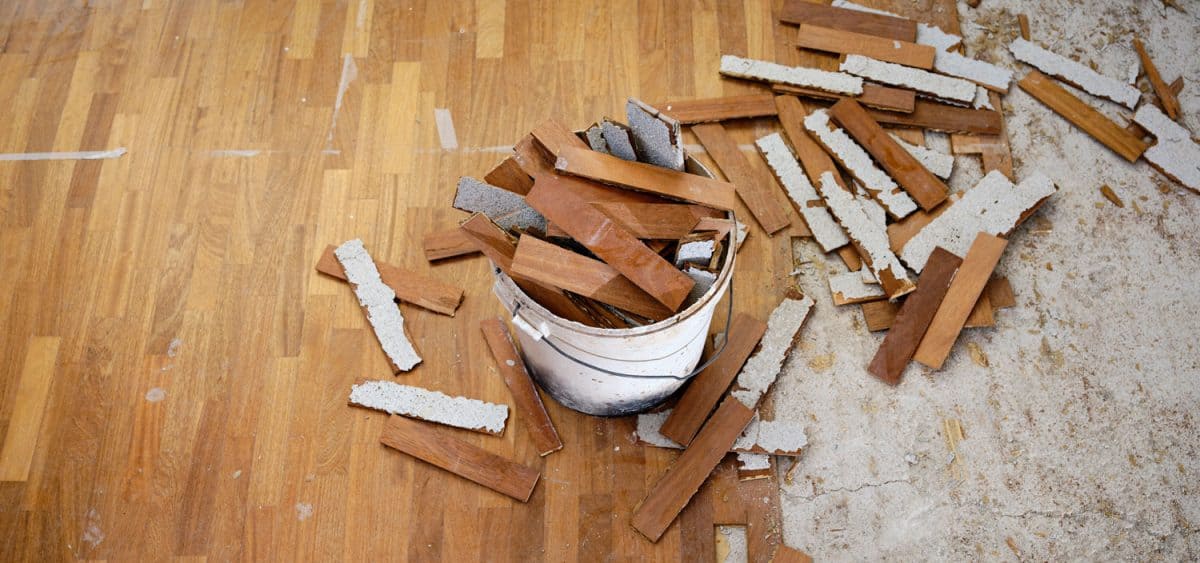
As discussed earlier, solvents may be ideal for removing glue from some surfaces but can damage hardwood and be harmful. To avoid this problem, consider using these alternative methods discussed below to remove glue from hardwoods:
Cold method
Glue can be removed from hardwood floors naturally using cold to harden adhesive, making it easier to scrape up and dispose of. Dry ice can be laid out in a pan or other container on the surface for about 10 minutes to freeze the old adhesive.
Water and ice will work, too, but it will take a bit longer to freeze the glue enough to harden. After scraping the hardened adhesive using a putty knife or floor scraper from your hardwood floors, use a vacuum to dispose of bits of adhesive.
Warm method
Heat can also soften and loosen the glue from the flooring below if cold doesn't work. A blow dryer can work well if a heat gun isn't an option.
Boiling water can also be a good option if working with a waterproof surface. After the surface of the adhesive is soaked in boiling water, softened adhesive can be scraped up easier.
Sanding method
If you are having difficulty removing the carpet tile adhesive from your wood floors, you can use sandpaper to scrape away stubborn old carpet glue. You will want to start with coarse-grit sandpaper and work your way to fine-grit paper as you get closer to the wood surface.
How much does it cost to remove glued-down carpet?
Carpet removal services can vary widely depending on the job and location. Costs can range from $45-$200 for the materials themselves.
Costs can be anywhere from $85 to $350 per 100 square feet for carpet removal-only services. Waste removal and haul away services will cost an additional $35-$150 per 100 square feet.
Do floor scrapers work?
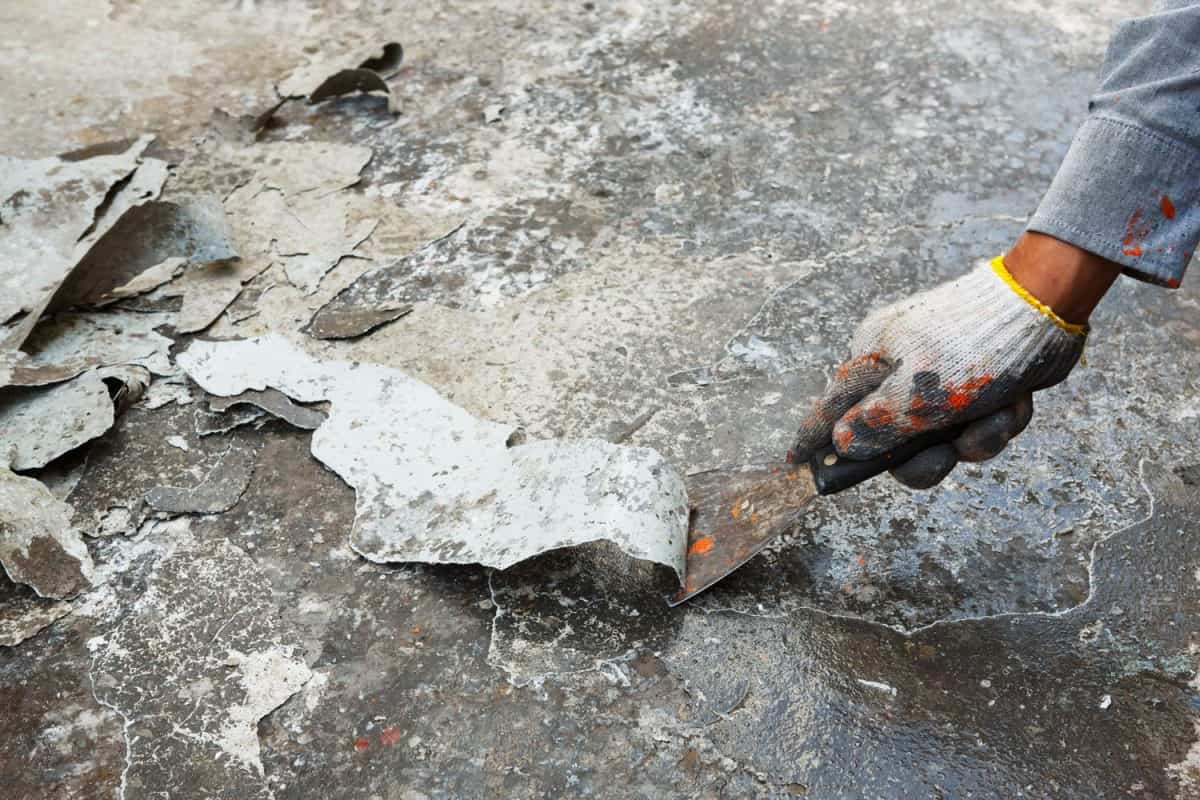
Floor scrapers are handy during the removal process of carpet or carpet tiles. Floor scrapers utilize a long razor to closely scrape adhesives behind carpet and carpet tiles.
Manual floor scrapers can help remove gum from hard-surfaced floors. Floor scrapers also come in a machine and ride-on version for heavy-duty jobs.
How do you replace carpet tiles?
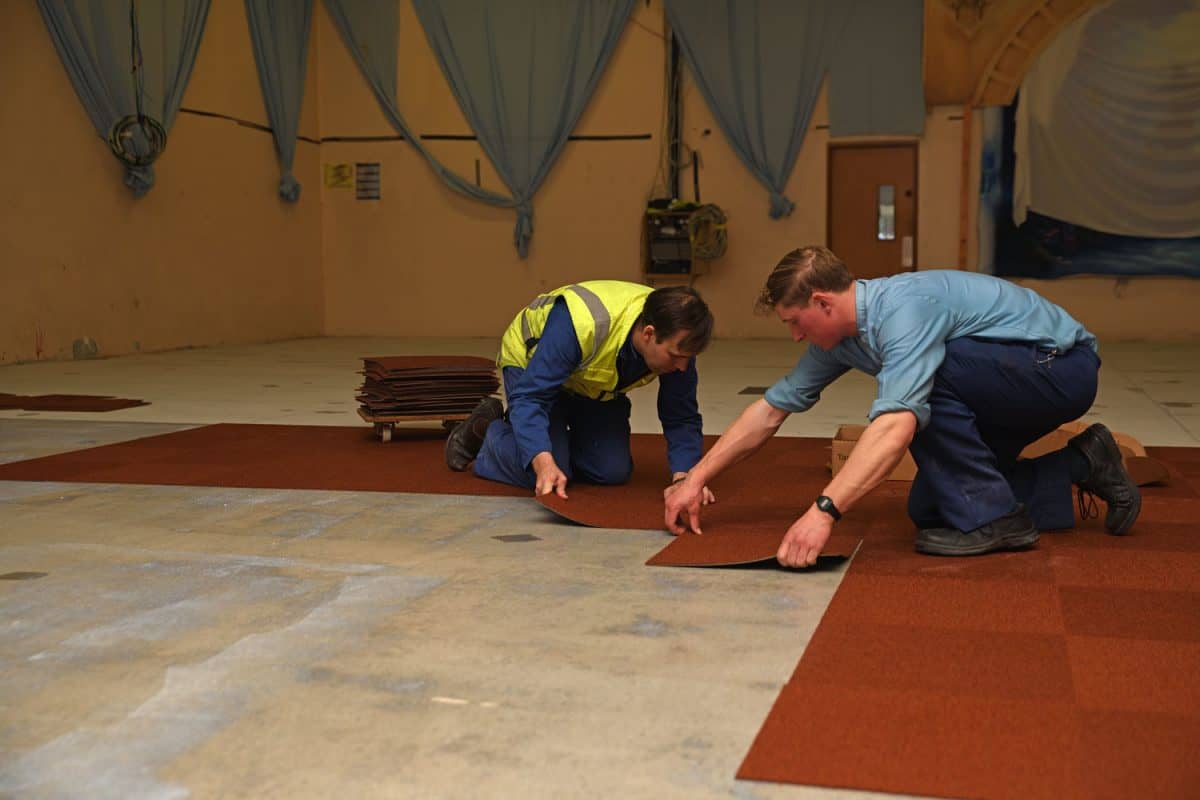
Replacing carpet tiles is an easy way to rid your floor of an unsightly spill or stain. After removing your old carpet tile, find the arrows on the bottom of your carpet tile.
These arrows show the pile direction of the tile. Your new tile should be placed in this same direction, carefully fitting the tile into the space before pressing down.
Final thoughts
There's nothing better than discovering that there is a beautiful wood floor buried under dirty and ugly carpet tiles. Pulling back this dust collecting veneer can easily be done yourself with a little bit of persistence and elbow grease.
We hope the process outlined above has helped you with your flooring removal project.
Before you go, here are some other articles that may be of help to you:
Carpet Seams Coming Apart – What To Do?
How Long Should Hardwood Flooring Acclimate? Can That Be In The Box?


